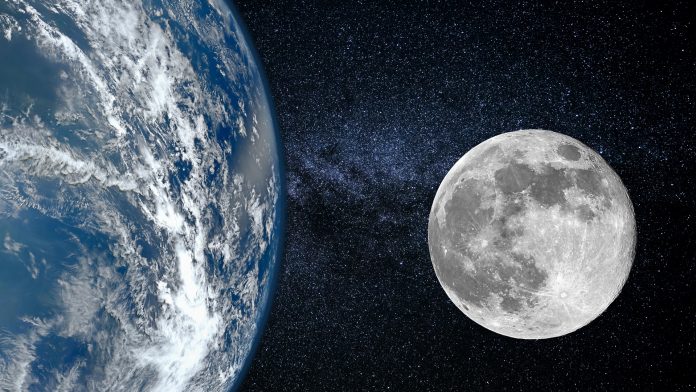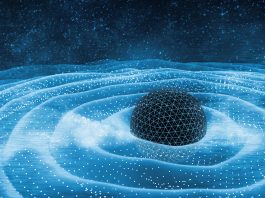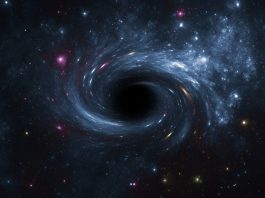A collaborative research team suggest utilising distance variations between the Earth and the Moon as a new gravitational wave detector.
The theory of gravitational waves was initially predicted by Albert Einstein at the start of the 20th century and detected for the first time in 2015. These detections are the new messengers of the most violent processes taking place in the Universe.
A collaborative research team from Universitat Autònoma de Barcelona (UAB), The Institute for High Energy Physics (IFAE), and University College London (UCL) propose using the variations in distance between the Earth and the Moon, as a new gravitational wave detector.
The research, which could revolutionise the detection of signals from the early universe, was published recently in Physical Review Letters.
How does a gravitational wave detector work?
The gravitational wave detectors scan different frequency ranges, which is useful to scientists because there are frequencies that are impossible to cover with current devices, and may harbour signals that are fundamental to understanding the Cosmos.
One particular example can be seen in microhertz waves, which could have been produced at the dawn of our Universe and are essentially invisible to even the most advanced technology available today.
How does the Earth-Moon System act as a natural wave detector?
Scientists Diego Blas from the Department of Physics at the UAB and IFAE, and Alexander Jenkins from the University College London (UCL), indicate that a natural gravitational wave detector exists in our immediate environment as the Earth-Moon System.
The research team observed that the gravitational waves that are constantly hitting this system generate tiny deviations in the Moon’s orbit. Although these deviations are miniscule, Blas and Jenkins plan on taking advantage of the fact that the Moon’s exact position is known with a minimal error of one centimetre.
This is due to the utilisation of lasers sent from different observatories, which are continuously reflected upon mirrors left on the surface of the Moon by the Apollo space mission, among others. This incredible precision, with an error of one billionth of a part at most, may allow a small disturbance caused by ancient gravitational waves to be detected.
The Moon’s orbit lasts approximately 28 days, which translates into a particularly relevant sensitivity when it comes to microhertz, which is the frequency range researchers are interested in.
What other methods have the potential to be utilised as wave detectors?
Scientists have additionally proposed utilising the information other binary systems in the Universe may provide as gravitational wave detectors. Pulsar binary systems distributed throughout the galaxy, are systems in which the pulsar’s radiation beam allows obtaining the orbit of these stars with incredible accuracy (with a precision of one millionth).
Given that these orbits last approximately 20 days, the passing of gravitational waves in the microhertz frequency range impact them particularly. Blas and Jenkins ascertained that these systems could also be potential detectors of these types of gravitational waves.
What does this mean for future scientific applications?
With these ‘natural detectors’ in the microhertz frequency range, Blas and Jenkins were able to determine a novel form of studying gravitational waves that are emitted by the distant Universe. Specifically, those produced by the possible presence of transitions in highly energetic phases of the early Universe, which is commonly seen in numerous models.
Blas concluded: “What is most interesting perhaps is that this method complements future ESA/NASA missions, such as LISA, and observatories participating in the Square Kilometre Array (SKA) project, to reach an almost total coverage of the gravitational waves from the nanohertz (SKA) to the centihertz (LIGO/VIRGO) frequency ranges.
“This coverage is vital to obtaining a precise image of the evolution of the Universe, as well as its composition. Covering the microhertz frequency range is a challenge, which now may be feasible without the need of building new detectors, and only observing the orbits of systems we already know.
“This connection between fundamental aspects of the Universe and more mundane objects is particularly fascinating and can eventually lead to the detection of the earliest signals we have ever seen, and thus change what we know about the cosmos.”
To keep up to date with our content, subscribe for updates on our digital publication and newsletter.









